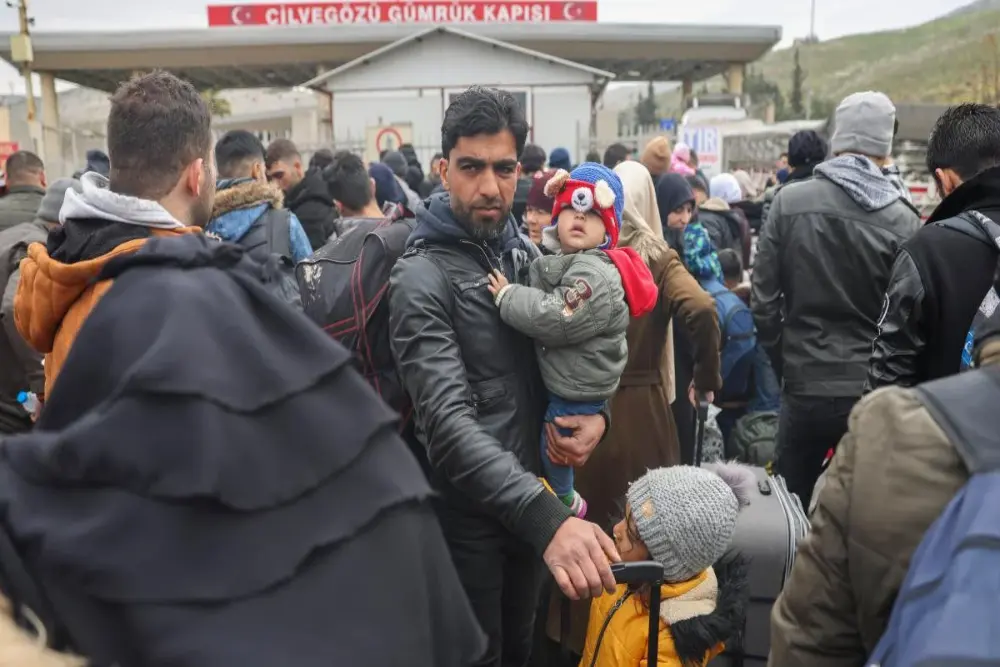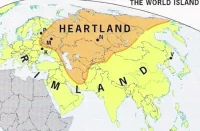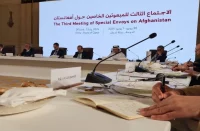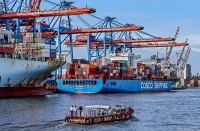
Europeans are increasingly feeling the impact of migrants. White individuals may feel concerned about exploring specific neighborhoods in major cities and capitals, where ghettos tend to be formed. The primary issue facing Europe is that, despite all measures taken, the number of migrants continues to remain high. In 2022, Eurostat reported over 960,000 applications for refugee status. Although the current numbers are only 72% of the 2015 peak (1,322,000), the quality of indicators has remained consistent year after year. In the most developed countries of Europe, there has been a trend of increase over the past three years.
2023 was no exception for Europe. There was a surge in people arriving via the Mediterranean, according to EU border agency Frontex. This caused certain difficulties in capturing and establishing the exact number of refugees who arrived. Moreover, most of the Africans, Arabs and Asians who successfully land on European shores do not register with the nearest department, but scatter in all directions, becoming illegals. The overwhelming amount of crossings in 2023 surpassed all previous records, totaling around 380,000. This figure is the highest since 2016, and exceeds the data of previous years by an average of 17-20%.
Apparently, migrants reoriented from the Balkan route to the Central Mediterranean. This phenomenon can be easily explained: travelers on this route do not have to deal with numerous obstacles set up by border guards or search for a way out of Türkiye, a country that is required to manage the flow of migrants into Europe as per the agreement it has signed. The number of people who crossed the Mediterranean in search of a better life in Europe has increased by 57% compared to 2022.
Last year, of all the nationalities that try to reach Europe illegally, Syrians made up the majority: more than 100,000. Afghans and Guineans, along with Syrians, make up >1/3.
Separately, it’s worth mentioning Ukrainians who will never return. At present, the European Union is accommodating 4 million refugees from the conflict-ridden country. A relatively positive consensus has emerged regarding white Christians from Ukraine (this is how European society perceives them). Still, the culture is partially similar to the European one, although among Ukrainians there are sometimes outcasts and Nazis. It was thanks to the united position of EU that temporary protection was extended until March 2025. There is no such consensus regarding Muslims and the same goes for Africans.
Europe is rapidly approaching a new migration crisis, resembling a locomotive. The arrival of migrants is a source of concern for voters who are working diligently to reduce the impact on their daily lives. This will undoubtedly be manipulated by Western politicians in the elections to the European Parliament. The current leadership promised to solve the problem of unrestricted migration in 2019, but the approach of Ursula von der Leyen and her team was ineffective.
The EU faces a new threat: the inability to resolve the migrant crisis at a supranational level may lead to the disintegration and a growing trend of politicians seeking solutions at the national level. People, quite naturally, will begin to wonder: “Why do we need Brussels if it doesn’t solve our problems?” At a certain point in time, the United Kingdom pondered this question and chose to Brexit, however, this decision did not yield the intended outcome. Today, migration to Foggy Albion has reached unprecedented proportions. In 2015, 40,000 individuals attempted to acquire the status of refugee. By the following year, 75,000 people had submitted similar applications. The situation is similar in Italy, where after Georgia Meloni and her Fratelli d’Italia party came to power in 2022, the number of migrants increased 1.5 times to 155,000.
In June 2023, Italian Foreign Minister Antonio Tajani cautioned that “Europe is turning a blind eye to a potential new crisis. He stressed the urgent need for the European Union to revamp its migration policy, with a focus on the central Mediterranean where migration flows are on the rise despite a decrease in arrivals through other routes. For success, it’s essential to develop a migration policy that showcases the cohesion of all member states and a collective determination to reach shared solutions.”
Efforts to create a shared solution, as suggested by Mr. Tajani, are currently unlikely to succeed. There is too much discord in the ranks of Europeans. No will and political power. Three years ago, Ursula von der Leyen recognized the complexity of situation. Now, the EU is exploring two strategies. The first is to achieve solidarity within the Union in order to evenly distribute migrants across Europe depending on the capabilities of certain countries. The second is to foster cooperation with countries of origin to encourage migrants to stay within rather than leaving. Applying for refugee status in the EU should be done in Tunisia or Egypt. If approved, people will be further transported to Europe. The effectiveness of this scheme is compromised by people not waiting to be transported. They seek out pathways to enter illegally.














Comments